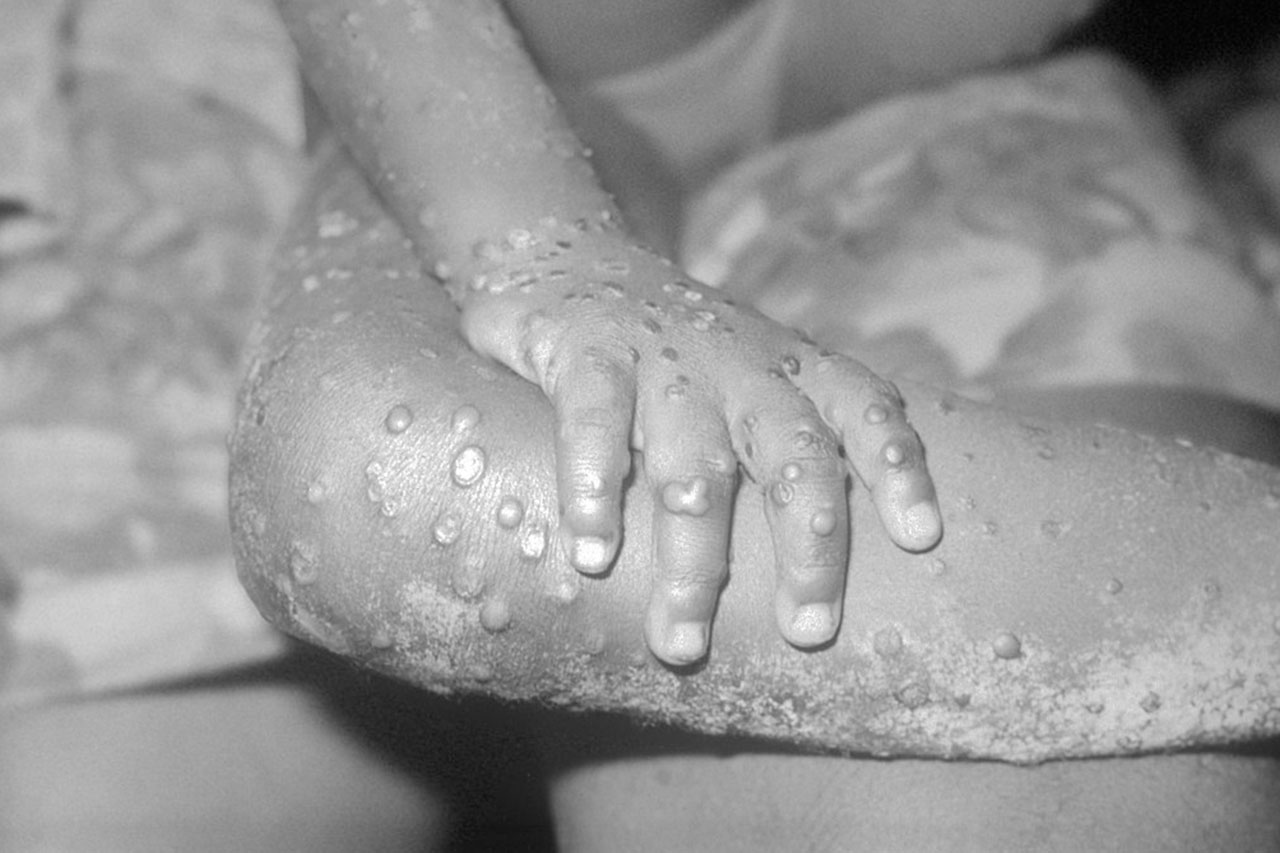
Article by Lalita Panicker, Consulting Editor, Views and Editor, Insight, Hindustan Times, New Delhi
The European Union and the United States have launched a new joint health task force to cooperate on cancer, global health threats and related supply chains and infrastructure, officials told a press conference last Wednesday.
https://www.medscape.com/viewarticle/992081?ecd=wnl_edit_tpal&uac=398271FG&impID=5445031&faf=1
The task force was set up on the heels of a cooperation agreement signed in June last year to tackle health emergencies like the COVID-19 pandemic.
EU Health Commissioner Stella Kyriakides met U.S. Health Secretary Xavier Becerra in Brussels to launch the unit.
The task force has already established two working groups focused on childhood and young adult cancer and lung cancer to cover prevention, detection and care. The first working groups convened virtually for the first time on May 10.
Working groups for other priority areas were still in the process of being established, the statement said, and that women’s rights and reproductive health were also among the priorities.
The EU and the U.S. said they are seeking to establish “durable global mechanisms” to handle health threats including avian flu, Marburg disease, antimicrobial resistance as well as post-COVID-19 conditions.
///
The Group of Seven (G7) nations plan to establish a new programme to distribute vaccines to developing countries at this week’s summit of leaders, according to a Reuters report that cited Japan’s Yomiuri newspaper on Saturday. https://thefinancialexpress.com.bd/health/g7-nations-plan-new-vaccine-programme-for-developing-countries
In addition to the G7, G20 nations such as India and international groups such as the World Health Organization (WHO) and the World Bank will participate, it added, citing Japanese government sources.
During the COVID-19 pandemic, the COVAX facility, backed by WHO and the Global Alliance for Vaccines and Immunization (GAVI), delivered nearly 2 billion doses of coronavirus vaccine to emerging countries.
However, COVAX faced setbacks in ensuring equitable access, as wealthy nations prioritised shots for their citizens while insufficient storage facilities in poorer nations caused supply delays and disposal of millions of close-to-expiry doses.
The new programme aims to pool rainy day funds for vaccine production and purchases, as well as investment in low-temperature storages and training of health workers to prepare for the next global pandemic, the paper said.
Japan, this year’s chair of the G7 meetings, looks to build support from emerging nations on wide-ranging issues such as supply chains, food security and climate change to counter the growing influence of China and Russia.
Details of the new vaccine programme are to be discussed at the G20 Summit in India in September, it added.
////
The African Union Commission (AUC) and Gavi, the Vaccine Alliance (Gavi), signed a Memorandum of Understanding (MoU) to increase access and accelerate the uptake of life-saving vaccines across African Union member states towards supporting immunisation, providing technical and learning assistance and health systems strengthening. https://www.gavi.org/news/media-room/signing-new-agreement-drive-vaccine-impact-africa
The MoU was signed on behalf of the African Union Commission Chairperson by the AU Commissioner for Health, Humanitarian Affairs & Social Development (HHS) H.E. Amb. Minata Samate Cessouma and Africa Centre for Disease Control and Prevention (Africa CDC) Director General Dr Jean Kaseya, and Gavi Chief Executive Officer Dr Seth Berkley. The partnership builds on the historic Addis Declaration on Immunization (ADI), which aims to ensure that everyone in Africa – regardless of who they are or where they live – receives the full benefits of immunization. It includes 10 commitments to increase political, financial and technical investments in immunization programs. The evolving direction of this partnership is bound to accelerate the attainment of health security as premised in the AU Agenda 2063 and the New Public Health Order (NPHO).
Through this MoU, AUC and Gavi commit to work together to:
1. Scale up and strengthen routine immunization, focusing on reaching “zero dose” children – children that have not received a single dose of a routine vaccine;
2. Build sustainable regional vaccine manufacturing in Africa;
3. Undertake joint advocacy to boost vaccine demand for routine vaccines;
4. Strengthen primary health care systems and bolster diagnostic and surveillance capacity for diseases such as yellow fever, cholera, and typhoid;
5. Communicate jointly on routine immunization, pandemic prevention, preparedness and response (PPR), vaccine access and delivery.
////
A ground-breaking epidemiological study has produced the most compelling evidence yet that exposure to the chemical solvent trichloroethylene (TCE)—common in soil and groundwater—increases the risk of developing Parkinson’s disease. The movement disorder afflicts about 1 million Americans, and is likely the fastest growing neurodegenerative disease in the world; its global prevalence has doubled in the past 25 years. www.science.org/content/article/widely-used-chemical-strongly-linked-parkinson-s-disease?
The report, published today in JAMA Neurology, involved examining the medical records of tens of thousands of Marine Corps and Navy veterans who trained at Marine Corps Base Camp Lejeune in North Carolina from 1975 to 1985. Those exposed there to water heavily contaminated with TCE had a 70% higher risk of developing Parkinson’s disease decades later compared with similar veterans who trained elsewhere. The Camp Lejeune contingent also had higher rates of symptoms such as erectile dysfunction and loss of smell that are
early harbingers of Parkinson’s, which causes tremors; problems with moving, speaking, and balance; and in many cases dementia. Swallowing difficulties often lead to death from pneumonia.
About 90% of Parkinson’s cases can’t be explained by genetics, but there have been hints that exposure to TCE may trigger it. The new study, led by researchers at the University of California, San Francisco (UCSF), represents by far the strongest environmental link between TCE and the disease. Until now, the entire epidemiological literature included fewer than 20 people who developed Parkinson’s after TCE exposure.
The Camp Lejeune analysis “is exceptionally important,” says Briana De Miranda, a neurotoxicologist at the University of Alabama at Birmingham who studies TCE’s pathological impacts in the brains of rats. “It gives us an extremely large population to assess a risk factor in a very carefully designed epidemiological study.”
TCE is a colourless liquid that readily crosses biological membranes. It turns into vapor quickly and can be absorbed by ingestion, through skin or by inhalation. It’s used today mainly in producing refrigerants and as a degreaser in heavy industry.
But in the 20th century, TCE was used for many purposes, including making decaffeinated coffee, dry cleaning, carpet cleaning, and as an inhaled surgical anaesthetic for children and women in labour. TCE is highly persistent in soil and groundwater; inhalation through vapor from these hidden sources is likely the prime route of exposure today. However, it’s detectable in many foods, in up to one-third of U.S. drinking water, and in breast milk, blood, and urine.
To conduct the study, the UCSF team and colleagues elsewhere scoured Department of Veterans Affairs and Medicare health records of nearly 85,000 Marine Corps and Navy personnel who were stationed for at least 3 months at Camp Lejeune decades ago. At the time, wells on the base were contaminated from leaking underground storage tanks, industrial spills, and waste disposal sites. Water used on the base contained TCE levels more than 70 times the level allowed by the U.S. Environmental Protection Agency (EPA). Recruits could have ingested TCE in food or water, been exposed through their skin when bathing or showering, or inhaled the highly volatile compound, which was also used by the military for degreasing and cleaning metal machinery.
The researchers calculated the rate of Parkinson’s disease in the veterans and compared it with the rate in more than 72,000 veterans who lived at Marine Corps Base Camp Pendleton, a similar training ground in California where there were not high levels of TCE. By 2021, 279 of the Camp Lejeune veterans, or 0.33%, had developed Parkinson’s versus 151 of those at Camp Pendleton, or 0.21%. After adjusting for differences in age, sex, race, and ethnicity, the scientists found veterans from Camp Lejeune had a 70% higher rate of Parkinson’s disease than the Camp Pendleton group. In January, EPA declared that TCE presents an “unreasonable risk of injury to human health” and said it will develop a rule regulating its use. (The chemical is also a known carcinogen.) But that “really means nothing for what’s already in the environment,” De Miranda says. Mitigating against exposure is tricky, she adds, because, unlike
with pesticides, underground TCE locations aren’t always documented.
The new study will likely add ammunition to class action lawsuits that were launched after Congress last year enabled veterans from Camp Lejeune to sue the government for health damage they suffered from exposure to the contaminated water there decades ago.
////
It’s official: President Joe Biden wants cancer researcher Monica Bertagnolli to be the next director of the National Institutes of Health (NIH). https://www.science.org/content/article/biden-nominates-monica-bertagnolli-lead-national-institutes-health? Nearly a month after the media widely reported she was the White House’s choice to succeed Francis Collins as chief of the world’s largest biomedical research agency, Biden last Monday announced Bertagnolli’s nomination, lauding her for “pushing the boundaries of what is possible to improve cancer prevention and treatment for patients.” She was chief of surgical oncology at the Dana-Farber Brigham Cancer Centre before Biden appointed her as director of the National Cancer Institute (NCI) in August 2022. And last month, Bertagnolli rolled out a 25-page update of NCI’s plans to implement Biden’s signature Cancer Moon-shot initiative, designed to cut the U.S. death rate from cancer by 50% by 2050.
The U.S. research community was quick to praise Biden’s move to fill the NIH slot, which has been vacant since December 2021. “At this critical time for innovation at the NIH, Dr Bertagnolli will be the visionary leader we need,” said Ellen Sigal, chair and founder of
Friends of Cancer Research. “Simply put, Dr Bertagnolli is the director NIH needs now,” says Sudip Parikh, CEO of AAAS, which publishes Science.
Bertagnolli, who was diagnosed with breast cancer shortly after taking the helm at NCI, needs to be confirmed by the Senate before she can become NIH’s 17th director. (The NCI director job doesn’t require Senate approval.) She is not seen as a controversial choice, but she’s expected to be grilled by the Senate Committee on Health, Education, Labour, and Pensions on NIH’s role on issues that energise both liberal and conservative lawmakers.






